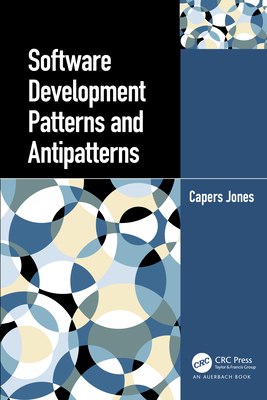Software Development Patterns and Antipatterns
暫譯: 軟體開發模式與反模式
Jones, Capers
- 出版商: Auerbach Publication
- 出版日期: 2021-08-27
- 售價: $2,860
- 貴賓價: 9.5 折 $2,717
- 語言: 英文
- 頁數: 492
- 裝訂: Quality Paper - also called trade paper
- ISBN: 1032017228
- ISBN-13: 9781032017228
-
相關分類:
Design Pattern
海外代購書籍(需單獨結帳)
相關主題
商品描述
Software development has been a troubling since it first started. There are seven chronic problems that have plagued it from the beginning:
- Incomplete and ambiguous user requirements that grow by >2% per month.
- Major cost and schedule overruns for large applications > 35% higher than planned.
- Low defect removal efficiency (DRE)
- Cancelled projects that are not completed: > 30% above 10,000 function points.
- Poor quality and low reliability after the software is delivered: > 5 bugs per FP.
- Breach of contract litigation against software outsource vendors.
- Expensive maintenance and enhancement costs after delivery.
These are endemic problems for software executives, software engineers and software customers but they are not insurmountable. In Software Development Patterns and Antipatterns, software engineering and metrics pioneer Capers Jones presents technical solutions for all seven. The solutions involve moving from harmful patterns of software development to effective patterns of software development.
The first section of the book examines common software development problems that have been observed in many companies and government agencies. The data on the problems comes from consulting studies, breach of contract lawsuits, and the literature on major software failures. This section considers the factors involved with cost overruns, schedule delays, canceled projects, poor quality, and expensive maintenance after deployment.
The second section shows patterns that lead to software success. The data comes from actual companies. The section's first chapter on Corporate Software Risk Reduction in a Fortune 500 company was based on a major telecom company whose CEO was troubled by repeated software failures. The other chapters in this section deal with methods of achieving excellence, as well as measures that can prove excellence to C-level executives, and with continuing excellence through the maintenance cycle as well as for software development.
商品描述(中文翻譯)
軟體開發自開始以來就一直存在著困擾。從一開始就有七個長期存在的問題困擾著它:
1. 不完整且模糊的使用者需求,每月增長超過2%。
2. 大型應用程式的主要成本和進度超支,超過計劃的35%。
3. 低缺陷移除效率(DRE)。
4. 未完成的取消專案:超過10,000功能點的專案中,超過30%被取消。
5. 軟體交付後的品質差且可靠性低:每個功能點超過5個錯誤。
6. 對軟體外包供應商的違約訴訟。
7. 交付後昂貴的維護和增強成本。
這些問題是軟體高層、軟體工程師和軟體客戶的流行病,但並非無法克服。在《軟體開發模式與反模式》中,軟體工程和度量的先驅 **Capers Jones** 提出了針對這七個問題的技術解決方案。這些解決方案涉及從有害的軟體開發模式轉向有效的軟體開發模式。
本書的第一部分探討了許多公司和政府機構中觀察到的常見軟體開發問題。這些問題的數據來自於諮詢研究、違約訴訟以及有關重大軟體失敗的文獻。本部分考慮了與成本超支、進度延遲、取消專案、品質差以及部署後昂貴維護相關的因素。
第二部分展示了導致軟體成功的模式。數據來自實際公司。本部分的第一章關於一家《財富》500強公司的企業軟體風險降低,基於一家主要電信公司的案例,其CEO因重複的軟體失敗而感到困擾。本部分的其他章節則探討了實現卓越的方法,以及能夠向高層管理人員證明卓越的措施,並在維護週期及軟體開發過程中持續保持卓越。
作者簡介
作者簡介(中文翻譯)
卡佩爾·瓊斯 是軟體工程方法論的專家,常與功能點成本估算模型相關聯。他曾擔任卡佩爾·瓊斯與聯合公司的總裁兼執行長,以及軟體生產力研究(SPR)的首席科學家名譽職位。2011年,他共同創立了 Namcook Analytics LLC,並擔任副總裁及首席技術官(CTO)。他於1984年成立了自己的公司,軟體生產力研究,此前曾在 IBM 和 ITT 擔任職位。2000年從軟體生產力研究退休後,他仍然活躍於獨立管理顧問的角色。他是資訊科技軟體品質聯盟(CISQ)的傑出顧問。











